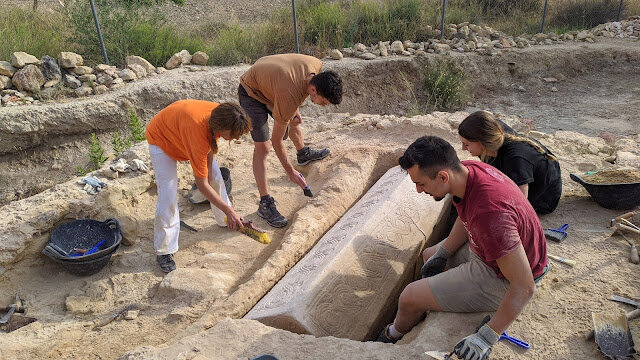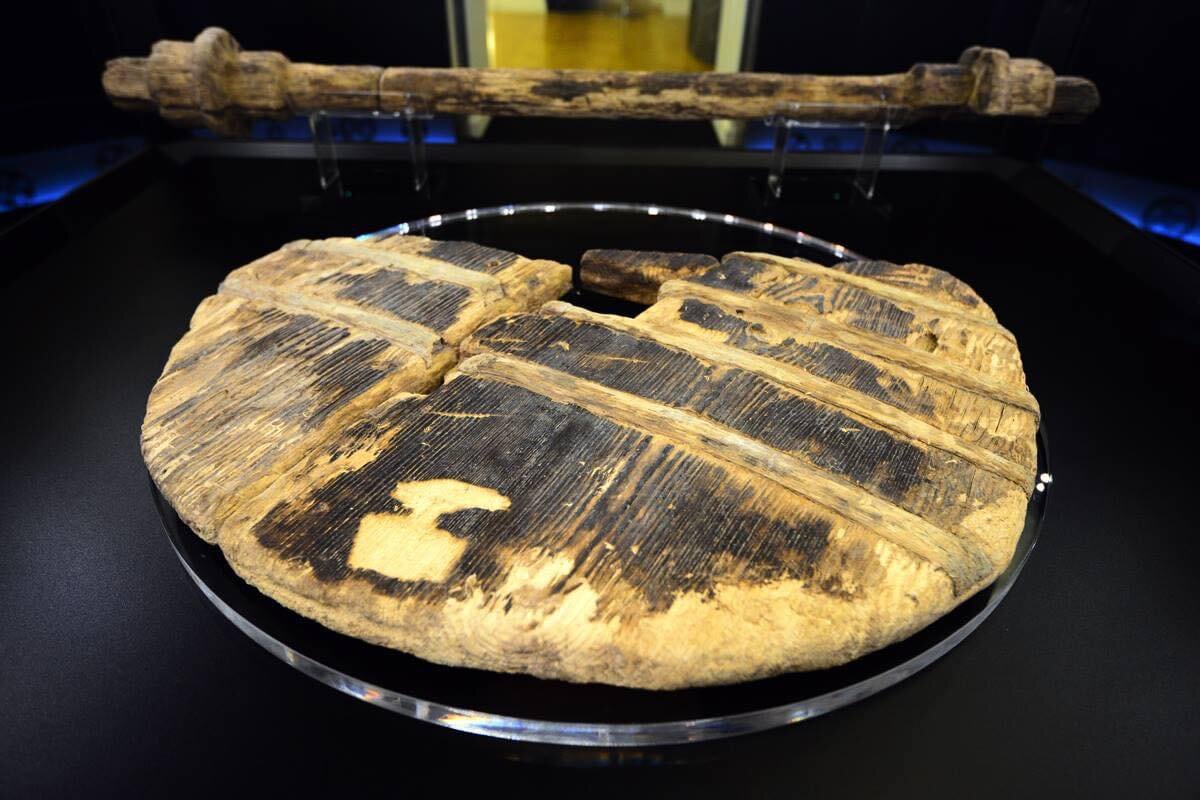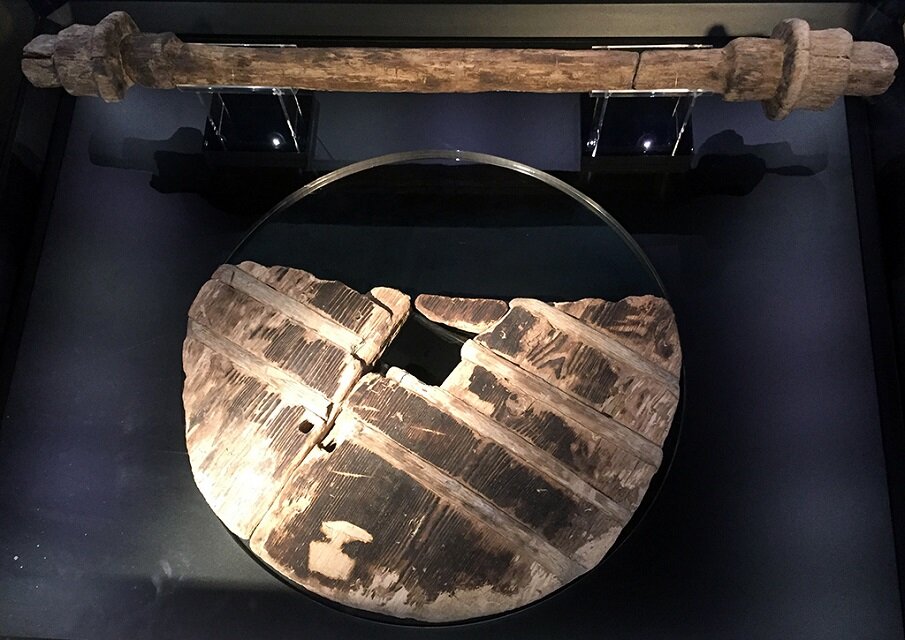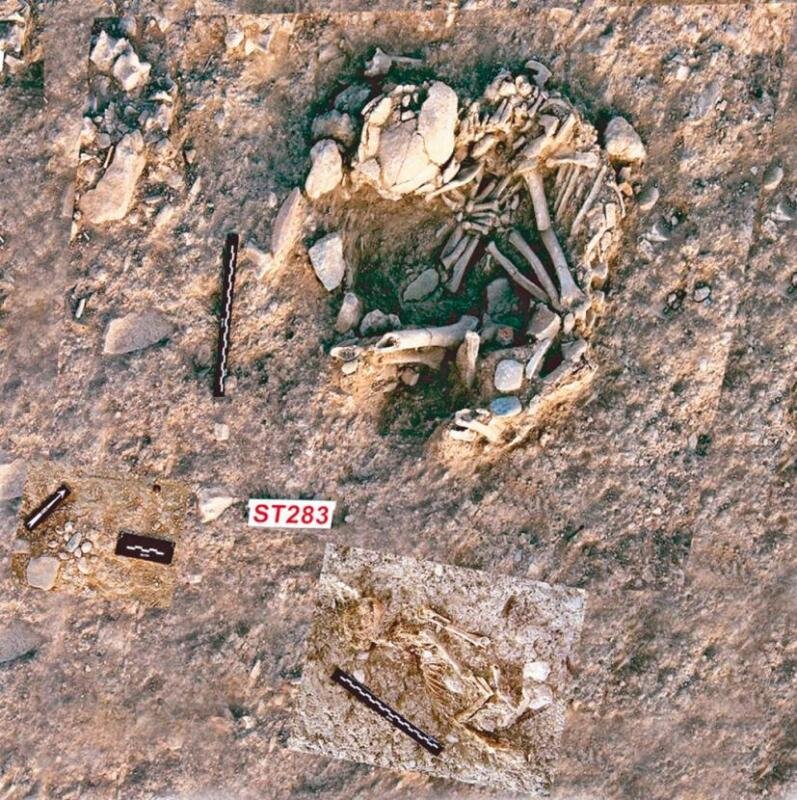Ring of hollows has been called the largest prehistoric structure found in Britain, but some were sceptical
simulated view of the underground pits near Stonehenge. Credit: Wild Blue Media/Channel 5/University of Bradford
When a series of deep pits were discovered near the world heritage site of Stonehenge last year, archaeologists excitedly described it as the largest prehistoric structure ever found in Britain – only for some colleagues to dismiss the pits as mere natural features.
Now scientific tests have proved that those gaping pits, each aligned to form a circle spanning 1.2 miles (2km) in diameter, were definitely human-made, dug into the sacred landscape almost 4,500 years ago.
The structure appears to have been a boundary guiding people to a sacred area, because Durrington Walls, one of Britain’s largest henge monuments, is located precisely at its centre. The site is 1.9 miles north-east of Stonehenge on Salisbury Plain, near Amesbury in Wiltshire.
Prof Vincent Gaffney, of Bradford University, an archaeologist who headed the team that made the discovery, said science had proved that this was indeed a huge neolithic monument. “Some of the debate about the discovery and Stonehenge seemed bonkers to me,” he said.
Soon after the discovery was announced in June 2020, one doubting archaeologist referred to the pits as “blobs on the ground” and said linking them to Stonehenge was “entirely hypothetical”. Another argued that archaeologists who had previously looked at some of the pits had suggested they were natural hollows, and that they could “be trusted to recognise a natural feature when they encounter one”.
The arguments shocked Gaffney, who recalled one archaeologist suggesting his team should have had a geologist on site to recognise natural features. In fact, he said, they had two.
The distribution of underground pits from above. Credit: Wild Blue Media/Channel 5/University of Bradford
While part of the circle has not survived, owing to modern development, Gaffney said the latest fieldwork involved scientific analysis of nine of the pits. “We’ve now looked at nearly half of them and they’re all the same. So effectively this really does say this is one enormous structure. It may have evolved from a natural feature, but we haven’t located that. So it’s the largest prehistoric structure found in Britain.”
Each pit is about 10 metres across and 5 metres deep, and science supports the theory that the neolithic people who constructed Stonehenge also dug this monument.
Pit 1A as seen through remote sensing scanning. Credit: Wild Blue Media/Channel 5/University of Bradford
The previously unknown subterranean ring is 20 times bigger than Stonehenge. It adds to the evidence that early inhabitants of Britain, mainly farming communities, had developed a way to count, tracking hundreds of paces to measure out the pits. It gives new insights into the complexity of the monumental structures in this landscape. While Stonehenge was positioned in relation to the solstices, the boundary of pits may have had cosmological significance.
Specialists in remote sensing technology that can search below ground have now investigated ancient features in the landscape that traditional archaeology could never detect. They can pinpoint where the ground has been disturbed, even after thousands of years.
The cutting-edge technology includes optically stimulated luminescence (OSL), which can date the last time that sediment was exposed to daylight.
The tests were conducted by Dr Tim Kinnaird, of the school of earth and environmental sciences at the University of St Andrews, who said: “These proved beyond doubt that the pits date to around 2400BC.”
He spoke of the “exciting” findings, including “the remarkable consistency across the cores, the identification of multiple and distinct fills, the suggestion that the pits were infilled at a similar time.” Detailed analytical work in the laboratory further confirmed that “these were not natural features”.
He added: “It’s confirmed that the [pits] are all very similar, which is fascinating.” If these were natural features such as sinkholes, they would be different sizes.
Gaffney, who has studied Stonehenge for 20 years, said: “There’s a real revolution in dating technology happening with OSL. You date the sediments directly. Traditional dating relies on us finding a bit of bone or charcoal and then we date that. We don’t date the soil. OSL does that.”
The data showed that the pits were being used from the late neolithic until the middle bronze age, after which they were left to silt, he said. “So these things are being maintained beyond the monumental phases of Stonehenge.”
The discovery is explored in a Channel 5 documentary titled Stonehenge: The New Revelations, to be aired on 9 December (9pm).
Dalya Alberge, The Guardian
































































































